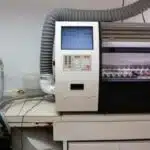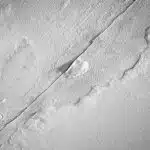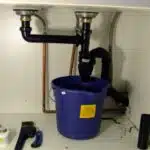Installing and connecting a new dishwasher can be a daunting task for anyone, but it doesn’t have to be. As an appliance installation and repair technician, I know firsthand the importance of having a properly installed dishwasher for efficient cleaning and maintaining a clean kitchen environment. In this article, I will guide you through the process of installing and connecting your new dishwasher in a thorough and easy-to-understand manner.
Firstly, it is crucial to ensure that you have all the necessary tools and materials before beginning the installation process. This includes items such as a screwdriver, pliers, adjustable wrench, Teflon tape, drain hose, water supply line, and electrical cord if not already attached. Once you have gathered all the required equipment, we can move onto the next steps involved in installing your new dishwasher. By following these step-by-step instructions carefully and patiently, you will soon have your brand-new appliance up and running efficiently in no time.
Assessing Your Home’s Plumbing And Electrical Systems
Before installing a new dishwasher, it is crucial to check the compatibility of your home’s plumbing and electrical systems. The first step is to ensure that the location where you plan to install the dishwasher has access to both hot and cold water lines, as well as a drain line. If your current setup does not have these components or if they are not in good working condition, you may need to hire a professional plumber to install or repair them.
In addition to plumbing considerations, it is also essential to evaluate your home’s electrical system. A dishwasher requires a dedicated circuit and should not be connected to an extension cord or outlet shared with other appliances. It is important to verify that your home’s electrical panel can accommodate the additional load of the dishwasher without overloading the existing circuits. For this reason, hiring a professional electrician is strongly recommended.
To ensure that your new dishwasher functions properly and safely, it is crucial to take the necessary steps in assessing your home’s plumbing and electrical systems before installation. Checking compatibility and hiring a professional plumber or electrician can prevent potential issues down the road and save you time and money in the long run. With proper preparation, you can enjoy hassle-free dishwashing for years to come. In the next section, we will discuss how to prepare the area for installation.
Preparing The Area For Installation
Assessing Your Home’s Plumbing and Electrical Systems is a crucial step in preparing for the installation of a new dishwasher. Before you begin, make sure that your home’s plumbing and electrical systems are compatible with the dishwasher model you have purchased. If you are unsure, seek professional guidance to ensure that the installation process goes smoothly.
Once you have determined that your home’s plumbing and electrical systems can support the new dishwasher, it is important to measure the space where the appliance will be installed. This will help ensure that there is enough room for the dishwasher to fit properly without any obstructions or issues. Additionally, it is essential to clear the surrounding area of any potential hazards or obstacles that may interfere with the installation process.
When preparing for a new dishwasher installation, taking these initial steps can save you time and money in the long run. By measuring the space and clearing the surrounding area before beginning, you can avoid common pitfalls such as incorrect placement or damage to surrounding fixtures. In our next section, we will discuss how to disconnect an old dishwasher (if applicable) before installing a new one.
Disconnecting The Old Dishwasher (If Applicable)
Before installing a new dishwasher, it is important to disconnect and remove the old one. If you are replacing an existing dishwasher, you will need to first disconnect it from the electrical and plumbing systems. Turn off the power supply to the dishwasher at the circuit breaker and shut off the water supply valve under your sink. Once disconnected, you can start removing the old unit.
To begin removing your old dishwasher, locate its mounting brackets that attach it to the countertop or cabinets. These brackets are typically located on top of the unit and are secured with screws or bolts. Remove these screws or bolts with a screwdriver or wrench to release the brackets from their position. You should also detach any wires or hoses that may be connected to the unit.
Once you have removed all connections, gently pull out the old dishwasher from its space. It is important to dispose of your old dishwasher properly as it contains electronic components that can harm both humans and animals if not disposed of correctly. Contact your local waste management facility or recycling center for information on how to dispose of your appliance in an environmentally friendly way.
Now that you have successfully removed your old dishwasher, you are ready to move on to removing the old mounting bracket and mounting hardware. This process will require additional tools such as a drill, pliers, and a screwdriver. Follow these steps carefully to ensure successful removal of all parts before proceeding with installing your new appliance.
Removing The Old Mounting Bracket And Mounting Hardware
Although it may seem like a daunting task, removing the old mounting bracket and mounting hardware is a necessary step in installing a new dishwasher. Many homeowners may be hesitant to remove these pieces themselves, fearing that they will damage their kitchen cabinets or countertops. However, with the right tools and careful attention, this process can be completed smoothly and without incident.
Before beginning this step, it is important to consider disposal options for the old mounting bracket and hardware. These items cannot simply be thrown away with regular household waste, as they contain metal components that could harm the environment if not properly disposed of. The most responsible option is to take them to a local recycling center or scrap metal yard.
To begin removing the old mounting bracket and hardware, you will need a few specific tools. These include pliers, screwdrivers (both flathead and Phillips), and an adjustable wrench. Start by disconnecting any screws or bolts connecting the bracket to the underside of your countertop or cabinets. Then use your pliers to detach any wires or hoses that are still connected to the old dishwasher. Finally, carefully remove any remaining screws or bolts from the bracket itself before lifting it off of its mount.
Installing The New Mounting Bracket And Mounting Hardware
After removing the old dishwasher, the next step is to install the new mounting bracket and mounting hardware. Choosing appropriate hardware for your specific model is critical to ensure a secure fit. The majority of dishwashers come with their own bracket and screws; however, some models may require additional parts that must be purchased separately.
Once you have all the necessary parts, it’s time to adjust the height of the mounting bracket to match the height of your countertop. This will ensure that your dishwasher fits snugly beneath your counter without leaving any gaps. To adjust the height, loosen the screws on either side of the bracket and move it up or down as needed. Then tighten the screws once again to secure it in place.
Now that you’ve successfully installed your dishwasher’s mounting bracket and hardware, you’re one step closer to having a functional appliance in your kitchen. The next section will cover how to prepare the drain hose and water supply line for installation. These steps are crucial for ensuring proper drainage and water flow in your dishwasher.
Preparing The Drain Hose And Water Supply Line
To prepare the drain hose and water supply line for a new dishwasher, the first step is to check the compatibility of these components with the new appliance. It is essential to ensure that the drain hose and water supply line match the specifications of your dishwasher model, as using incompatible components can cause leaks or damage to your appliance. Check the manufacturer’s instructions manual or consult an appliance installation and repair technician for guidance on selecting appropriate parts.
Once you have confirmed compatibility, it’s time to adjust the length of the drain hose and water supply line. You may need to cut or extend these components depending on their distance from your dishwasher’s installation location. To avoid kinks in the hose or any other complications, make sure there is enough slack in both lines. Avoid extending them too much as this can cause backflow issues.
Checking compatibility and adjusting hose length are crucial steps in preparing your dishwasher’s drain hose and water supply line. By taking these steps before installation, you can prevent potential issues that could arise while connecting these components. In the next section, we will discuss how to connect your drain hose properly without causing any damage to your new dishwasher.
Connecting The Drain Hose
To connect the drain hose, start by cleaning the area where you will be attaching it. Use a clean cloth or sponge to wipe away any dirt or debris around the opening where the hose will be inserted. This is important to prevent clogs and ensure that water flows smoothly through the hose.
Next, inspect the length of your dishwasher’s drain hose. If it is too short to reach your home’s plumbing system, you may need to purchase a hose extension. These can be found at most hardware stores and are easy to install. Simply attach one end of the extension to your existing drain hose and insert the other end into your plumbing system.
When connecting your drain hose, make sure it is securely attached to both your dishwasher and your home’s plumbing system. A loose connection can cause leaks and damage to your floors and cabinets. Also, consider using a high-quality clamp or zip tie to keep the hose in place and prevent it from coming loose over time. With these tips in mind, you should have no trouble connecting your dishwasher’s drain hose in just a few minutes.
Moving on to the next step, we will be connecting the water supply line. Before doing so, make sure that all connections are tight and secure, especially those involving water flow. This will prevent leaks from occurring once you begin running your new dishwasher regularly.
Connecting The Water Supply Line
It is important to note that the water supply line connection is a crucial part of installing a new dishwasher. In fact, according to recent statistics, improper installation of the water supply line is one of the most common causes of dishwasher malfunction. Therefore, it is essential to ensure that this step is done correctly.
Before connecting the water supply line, check the type of water valve you have. If you have a compression fitting valve, simply connect the water supply line and tighten it using a wrench. However, if you have a ball valve or gate valve, make sure to adjust the pressure before attaching the water supply line. This can be done by turning on the main water valve and allowing it to run for several seconds until all air has escaped from the pipes.
It is also important to adjust the pressure to match your dishwasher’s specifications. Refer to your dishwasher manual for specific instructions on pressure adjustment. Once adjusted, connect the water supply line and tighten it using a wrench. At this point, turn on the water supply and check for leaks. If there are no leaks present, proceed with testing your dishwasher’s functionality by running it through its first cycle.
To continue with installing your new dishwasher, we will now move onto attaching the electrical cord (if applicable).
Attaching The Electrical Cord (If Applicable)
When it comes to attaching the electrical cord of your new dishwasher, there are a few important factors to consider. First and foremost, you need to choose the right cord. This means selecting one that is compatible with both your dishwasher and your home’s electrical system. It’s always best to consult the manufacturer’s instructions or seek advice from a professional electrician if you’re unsure.
Once you have the correct cord, you can begin the installation process. However, safety should always be at the forefront of your mind during this step. Make sure that all power sources are turned off before attempting any work on the electrical components of your dishwasher. Additionally, don’t attempt any repairs or modifications unless you have experience in this area.
To ensure that everything is connected correctly and safely, follow these five bullet points:
- Use a grounded outlet
- Connect wires according to manufacturer instructions
- Don’t force connections
- Check for any signs of damage or wear on the cord before installation
- Test the connection before using the dishwasher
By taking these steps to attach your electrical cord properly and safely, you can enjoy peace of mind knowing that your new appliance is ready to use. Once complete, it’s time to move onto securing your dishwasher in place for optimal performance and longevity.
Transition sentence: Now that your electrical cord is attached securely and safely, it’s time to focus on securing the dishwasher in place for optimal performance and longevity.
Securing The Dishwasher In Place
Anchoring tips are an essential aspect of securing the dishwasher in place. It is necessary to ensure that the dishwasher remains stable during operation, preventing any damage or injury. The best way to achieve this is by using a mounting bracket, which can be bought separately or comes with the dishwasher.
When anchoring the dishwasher, it is crucial to ensure that it is level and flush with the surrounding cabinets. This will provide additional stability and prevent any leaks from occurring. It may be necessary to adjust the height of the legs or use shims to achieve this levelness.
Another important consideration when anchoring the dishwasher is to use appropriate screws and hardware that can support its weight. The manual that comes with your dishwasher will provide specific instructions on which screws and hardware should be used for optimal stability. Following these guidelines will ensure that your dishwasher remains securely anchored in place while operating.
Ensuring that your dishwasher is properly anchored in place is vital for its stability and longevity. Once you have securely mounted your dishwasher, the next step is to level it correctly. This will not only improve its overall performance but also prevent any future problems caused by an unbalanced unit.
Leveling The Dishwasher
After securing the dishwasher in place, the next crucial step is to level it. This ensures that it sits evenly on the floor and reduces the risk of leaks or damage. Leveling also helps with proper drainage and efficient cleaning since water can flow towards the drain without obstruction. To achieve this, you need to adjust the height of the dishwasher legs until it is balanced.
To check if your dishwasher is level, open its door and observe if it stays in place or swings back and forth. If it moves even slightly, then there could be an imbalance that affects its performance. To correct this, use a level tool placed on top of the dishwasher to determine which side needs adjustment. Turn each leg clockwise or counterclockwise until you achieve balance.
Adjusting height and checking balance are essential steps in leveling your dishwasher. It ensures a smooth installation process that guarantees optimal performance and longevity of your appliance. By taking time to level your machine, you also avoid unnecessary repairs and expenses later on.
Now that you have leveled your dishwasher correctly, it’s time for testing! But before running any cycles, make sure all connections are secure, including the water supply line and drain hose. Once everything is in place, turn on your machine and let it run through a full cycle while checking for any leaks or unusual noises. With these steps completed successfully, you can now enjoy using your new dishwasher without any worries!
Testing The Dishwasher
Now that the dishwasher has been installed and connected properly, the next step is to test it. Before running a full load, it is important to check for any leaks or malfunctions. Testing procedures vary between manufacturers, so be sure to consult the owner’s manual for specific instructions.
One common testing procedure is to run a cycle with no dishes inside. This allows you to check for leaks and ensure that water is entering and exiting the unit properly. You should also listen for any unusual noises or vibrations during the cycle. If you notice anything out of the ordinary, refer to the owner’s manual for error troubleshooting.
Another important test is to run a full load of dishes. This will give you an idea of how well the dishwasher cleans and dries your dishes. Pay attention to any spots or residue left on your dishes after the cycle finishes. If there are issues with cleaning or drying performance, refer to the owner’s manual for troubleshooting tips.
Moving forward, if any errors arise during testing or regular use of your dishwasher, don’t panic! Troubleshooting common issues can often be done quickly and easily at home without professional help. In the next section, we will cover some common issues you may encounter with your dishwasher and how to address them effectively.
Troubleshooting Common Issues
When installing a new dishwasher, it is important to ensure that it is properly connected and functioning correctly. However, even with proper installation, issues can arise. Here are some common solutions to troubleshooting issues that may occur with your newly installed dishwasher.
Firstly, if your dishwasher is not cleaning dishes effectively or leaving behind residue, it may be due to a dirty filter or spray arm. Check the filter for any debris and clean it thoroughly. Also, inspect the spray arm for any clogs or damage. If there are any issues, replace the spray arm as necessary.
Secondly, if your dishwasher is making unusual noises during operation, it could be an indication of a faulty pump motor or worn out wash impeller. Inspect these components and replace them if necessary. Additionally, check for any loose parts in the dishwasher that may be causing excessive vibration during operation.
Lastly, if your dishwasher is leaking water onto your kitchen floor or countertops, it may be due to a damaged door seal or faulty water inlet valve. Inspect the door seal for any cracks or tears and replace as necessary. Additionally, inspect the water inlet valve for any leaks and replace if needed.
By implementing these troubleshooting techniques and common solutions to issues you may face with your new dishwasher installation, you can ensure that your appliance operates smoothly and efficiently. In the next section, we will discuss some tips on maintaining your dishwasher to prolong its lifespan and prevent future issues from arising.
Maintaining Your Dishwasher
- The filter of a dishwasher should be periodically cleaned to prevent any blockages from occurring.
- Before installation, all hoses should be checked for any leaks or damage that may have occurred in transit.
- All parts should be replaced with the correct manufacturer’s parts to ensure correct performance.
- It is important to ensure that all parts are securely connected and mounted correctly.
- Proper installation and maintenance of a dishwasher will ensure that it runs optimally and safely.
- Regular inspections of the dishwasher should be performed to ensure that all parts are in good condition and functioning correctly.
Cleaning The Filter
One of the essential cleaning maintenance tasks for your dishwasher is to clean the filter regularly. The filter is responsible for trapping food particles and debris that get washed off from the dishes. Over time, the filter can become clogged with these particles, causing your dishwasher to malfunction. Therefore, it’s crucial to keep your filter clean to ensure optimal performance.
To clean the filter, start by locating it at the bottom of the dishwasher’s interior. Remove any dishes or utensils from the dishwasher and then carefully unscrew or detach the filter cover. Once you have access to the filter, gently pull it out of its place and rinse it under running water. Use a soft-bristled brush or toothbrush to scrub away any stubborn residue on both sides of the filter.
If you encounter any troubleshooting problems while cleaning your dishwasher’s filter, such as difficulty accessing it or finding broken parts, don’t hesitate to seek professional assistance from a certified technician. They can help diagnose and repair any issues with ease, ensuring that your dishwasher runs smoothly for years to come. Remember that regular cleaning maintenance is key to keeping your dishwasher in excellent condition and preventing costly repairs down the line!
Checking The Hoses
As an appliance installation and repair technician, it is essential to emphasize the importance of regular cleaning maintenance for your dishwasher. Neglecting this task can result in a malfunctioning dishwasher that requires costly repairs. One crucial aspect of maintaining your dishwasher is checking the hoses.
Inspecting connections is necessary to ensure there are no leaks or damages present that could lead to water damage. Begin by turning off the power supply and water source. Then, locate the hoses at the back of the dishwasher and trace them to where they connect to your home’s plumbing system. Check for any signs of wear or tear, such as cracks or holes, and tighten any loose connections.
Another critical step in checking the hoses is testing water pressure. Low water pressure can cause inadequate cleaning results, while high water pressure can lead to leaks or burst hoses. You can use a water pressure gauge to test the pressure level at the point where the dishwasher connects with your home’s plumbing system. If you notice any irregularities in water pressure levels, it’s best to seek professional assistance from a certified technician who can diagnose and repair any issues effectively.
In conclusion, checking the hoses is a crucial step in maintaining your dishwasher’s optimal performance. Regular inspection of connections and testing of water pressure levels can prevent costly repairs down the line while ensuring efficient operation of your appliance. Remember that seeking professional assistance from a certified technician when encountering problems is always an excellent way to ensure that your dishwasher runs smoothly for years to come.
Replacing Parts
As an appliance installation and repair technician, maintaining your dishwasher’s optimal performance requires a thorough understanding of its components. One essential aspect of maintenance is replacing parts that have worn out or malfunctioned. Knowing how to replace parts can save you both time and money instead of purchasing a new unit.
Before replacing any parts, it’s necessary to perform troubleshooting techniques to identify the problem accurately. This step ensures that you replace only the part causing the issue rather than wasting money on unnecessary repairs. Some common issues that require part replacement include clogged spray arms, faulty water inlet valves, broken dish racks, and malfunctioning motors.
Replacing parts can be tricky, but with proper knowledge and tools, it’s achievable. It’s crucial to consult your dishwasher manual for specific instructions on how to replace each component. Additionally, ensure that you use the appropriate replacement parts recommended by the manufacturer. If you’re unsure about your ability to replace parts correctly or troubleshoot problems effectively, contact a certified technician for assistance.
In summary, regularly replacing worn-out or faulty parts is crucial in maintaining your dishwasher’s optimal performance. Troubleshooting techniques can help identify specific issues that require replacement, saving you time and money in the long run. Always refer to your manual and use manufacturer-recommended replacement parts when performing repairs. If unsure about completing repairs yourself, seek professional assistance from a certified technician for efficient and effective results.
Frequently Asked Questions (Faqs
Are you planning to install a new dishwasher in your home? We understand that this can be a daunting task, but with the right knowledge and tools, you can successfully complete the installation process. In this section, we will address some of the frequently asked questions regarding dishwasher installation and provide tips on how to avoid common mistakes.
One of the most common questions regarding dishwasher installation is whether it is possible to install it yourself or if professional assistance is required. The answer depends on your level of experience and comfort with plumbing and electrical work. If you have prior experience with appliance installation or are handy with household repairs, then installing a dishwasher yourself may be feasible. However, if you are unsure about any aspect of the installation process, it is recommended that you seek professional help.
To ensure that your dishwasher operates smoothly and safely, there are certain mistakes that you should avoid during installation. One mistake is not properly securing the dishwasher to the countertop or cabinet, which can lead to instability and damage to surrounding areas. Another mistake is not connecting the water supply correctly, resulting in leaks that can cause water damage to floors and walls. Additionally, failure to ground the appliance properly can result in electrical hazards.
| Common Mistakes | Causes | Prevention |
|---|---|---|
| Improperly securing dishwasher | Lack of hardware or incorrect installation | Follow manufacturer’s instructions carefully |
| Incorrect water supply connection | Loose connections or incorrect hose routing | Double-check connections before turning on water |
| Failure to ground appliance | Incorrect wiring or lack of grounding wire | Consult an electrician if necessary |
Remember that proper installation of your new dishwasher is crucial for its efficient operation and longevity. By following these guidelines and seeking professional help when necessary, you can enjoy using your new appliance without any worries.
Conclusion
When it comes to installing and connecting a new dishwasher, proper assessment of your home’s plumbing and electrical systems is crucial. Careful preparation of the installation area, including disconnecting any old dishwasher and replacing mounting hardware, is also essential. Once the new dishwasher is installed, it should be thoroughly tested for functionality and any common issues addressed promptly.
As an appliance installation and repair technician, my years of experience have taught me that maintaining your dishwasher is just as important as its initial installation. Regular maintenance can prevent costly repairs down the line and extend the life of your appliance. By following these steps and taking care to troubleshoot common problems, you can enjoy the convenience of a fully operational dishwasher in your home for many years to come.
Image Credits
- “Kitchen with new stove, microwave and dishwasher installed” by bossco (featured)


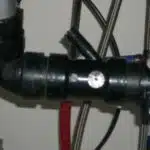

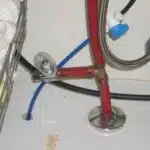
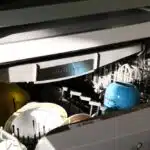




![How To Get Hair Out Of A Bathtub Drain 10 2/365 [Bathtub Drain]](https://green-life.blog/wp-content/uploads/2023/05/cOEu5edpkejq-150x150.jpg.webp)
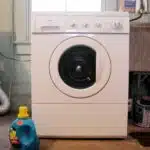



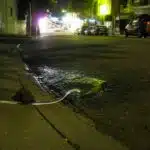
![How To Replace A Bathtub Drain In A Mobile Home 16 2/365 [Bathtub Drain]](https://green-life.blog/wp-content/uploads/2023/05/3ft8KAJsNnjq-150x150.jpg.webp)



